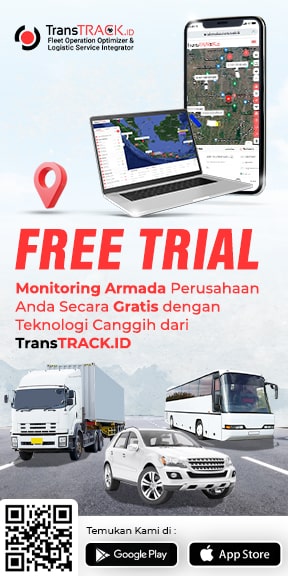Find Out What Inbound Logistics is and How to Optimize It!
Posted on January 16, 2024 by Nur Wachda Mihmidati

Inbound Logistics is part of the logistics process. Then, what is Inbound Logistics itself? This time, we will learn about it together with TransTRACK through the following article!
Inbound Logistics, What is it?
Inbound Logistics refers to the transportation, storage, and receiving of goods into a business. It deals with the procurement of goods for office use or for production units. In a manufacturing company, the production unit purchases raw materials or components from its suppliers for the production of other goods.
In short, the process of bringing the purchased goods into the company is known as Inbound Logistics. However, if it is the movement of goods from a manufacturing company to its customers or other companies, this process is called “outbound logistics”. Inbound Logistics, therefore, focuses on inbound goods i.e. the entry of goods from the supplier to the warehouse.
Stages of Inbound Logistics
Here’s a step-by-step look at the stages that make up Inbound Logistics:
Supply flow management
This consists of deciding and managing the quantity of products we need as well as the frequency of procurement to ensure they are available when needed.
Stock procurement
This refers to the purchase of products needed by the production or sales department. To purchase goods, we need to select suppliers by considering factors such as price, quality, delivery date, payment terms, etc.
Transportation planning
Planning the arrival of goods is essential to prevent congestion at our warehouse docks. Everyone involved in this stage should be aware of the expected orders and their estimated time of arrival.
Unloading and receiving of materials
This relates to the unloading of goods from trucks and their movement to receiving or consolidation areas. It is very important to ensure that the product we receive is exactly what we ordered. The package is also checked at this phase to ensure it is in perfect condition.
Choice of load unit
Once the goods are verified and undergo quality control, they are placed on the appropriate unit load – pallets, boxes, or containers – that will be used to store, transport, and handle the product.
Product labeling and consolidation
All information relating to the goods received needs to be recorded in order to add new products to the existing stock in the system, thus updating the inventory status.
Storage in the ideal system
Goods that are labeled and ready for storage are moved to the storage system that best suits their characteristics. The product remains there until it is needed at the next stage of the supply chain.
In the Inbound Logistics phase, all operations need to be done in the shortest possible time, minimizing errors to facilitate other logistics processes.
Benefits of Implementing Inbound Logistics
Efficient Inbound Logistics management can bring many benefits to a business. Here are some of them-
- Predictable raw material costs
- Excellent product quality
- On-time and cost-controlled delivery
- Lower shipping and receiving costs
- Better inventory management
- Stronger vendor relationships
How to Optimize Our Inbound Logistics and Outbound Logistics Operations
Businesses are increasingly aware of the fact that efficient Inbound Logistics has a positive effect on the rest of the operations in the supply chain. Coordination between all departments and processes involved in Inbound Logistics is a must so that the company as a whole can work like a well-oiled machine.
Supply chain digitization can be a solution to maximize the efficiency of inbound logistics. The goal of Smart Supply Chain is to automate a company’s documentation management and organization of its procedures and workflows, among other objectives.
With the help of modern technology and the various options it offers, it is now easier for businesses to optimize their Inbound Logistics and Outbound Logistics operations. The goal is to make the process smoother, more cost-effective, and increase productivity. Inbound Logistics can be optimized in the following ways:
1. Increased automation in Inbound Logistics
Automating the process involves optimizing routes for shipments using intelligent route optimization software that leverages machine learning, analytics, GPS tracking, and dynamic routing to give us the most optimal route.
This can help in increasing productivity by tracking inbound delivery fleets, loading and unloading of goods, operations in factories, and save businesses a lot of time and money by following their timelines.
2. Using an advanced logistics management system for Inbound Logistics
Modern logistics management systems allow businesses to stay up-to-date with the market scenario of shipping costs and other dynamic factors that can adversely impact inbound operations. Being on top of the dynamic changes taking place in the logistics industry, businesses can save a lot of money by having adequate visibility over the prevailing rates, as opposed to just abiding by the costs quoted by different suppliers.
3. Improving customer experience
Today’s consumers want end-to-end visibility of their freight transportation operations. Optimization of Inbound Logistics processes also enables businesses to provide relevant information to their end users, allowing them to track the whereabouts of their orders at every stage.
An advanced modern Inbound Logistics management system will allow businesses to plan production and ETAs accordingly so that there are no discrepancies involved in their communication with customers.
4. Develop vendor inbound compliance standards (VICS)
Logistics businesses often deal with multiple suppliers and vendors which makes it difficult to streamline their inbound operations. It is beneficial for companies to design vendor inbound compliance standards that will act as a guideline for all stakeholders and avoid disruptions in the supply chain.
Outbound Logistics processes focus on delivering goods to end users and optimizing this process includes several variables such as:
5. Build strategic relationships with third-party suppliers
It is important to build strategic relationships with third-party logistics providers, carriers, and suppliers to ensure efficient logistics operations. This can be done by analyzing their performance based on key parameters such as on-time full delivery, pricing models, volume of goods, business needs, and other delivery activities. Advanced logistics management platforms allow businesses to track these factors and determine how third-party providers affect the business and can help businesses to negotiate on shipping rates.
6. Optimize communication
Since the Outbound Logistics process involves multiple stakeholders, efficient communication practices need to be in place to ensure that the movement of goods is according to plan.
Constant communication with warehouse managers and delivery personnel ensures faster decision-making and clarifies doubts or confusion at every step. Modern tools also allow businesses to optimize routes, track the location of delivery vehicles, and thus, ensure more transparency.
7. Cross-docking warehouse operations
Cross-docking refers to a practice where workers sort incoming goods quickly and then load them onto outgoing trucks. This reduces the period of time the final product remains in the warehouse thereby reducing the use of warehouse space. It also enables quick inspection of finished products and improves customer satisfaction by ensuring delivery of good quality products and fewer returns.
Optimizing these inbound logistics operations can be done with a sophisticated logistics management system such as Fleet Management System. FMS itself can be obtained through TransTRACK which has all the advanced features in it such as monitoring driver behavior, increasing fuel efficiency, increasing fleet utility and safety, and other features. Use FMS from TransTRACK for more organized inbound and outbound logistics!
Topic :
 Bahasa Indonesia
Bahasa Indonesia








